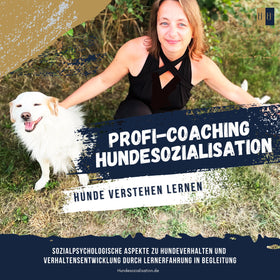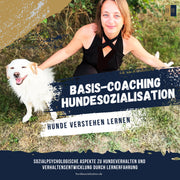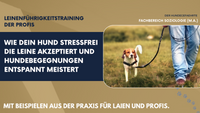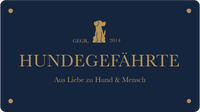General questions
When you are in the shopping cart, select the number of products you have put in. Then press "Checkout" to check out. To change the number of products, click on the small bag symbol in the top right (mobile phone & PC) to return to the shopping cart where you can adjust the number.
Unfortunately, this isn't possible due to the excessive effort involved. Please use the discount code you received and enter it in the designated field during checkout. Since we receive almost daily requests to retroactively apply the discount, we can no longer offer this service. If a discount code doesn't work, please contact us via chat – we'll take care of it as quickly as possible.
Our discount campaigns have no time limit, but end after a certain number of uses. This means that your number of pieces is limited. Higher discounts therefore have a shorter duration than lower discounts. We also announce discount campaigns in our newsletter, which you can subscribe to below.
All information about cancellation and exchange can be found here .
If your goods have not yet been shipped, this is possible. To do this, send us an email to info@der-hundegefaehrunge.de or call us. However, we cannot guarantee that the order will be canceled/changed before shipment as there may be overlaps.
The size chart can be found at the bottom of the " The right size " page.
In the order confirmation email and in the shipping email you will find a link to instructions for setting up and tips for the first steps with STURMFREI®. On the “ Training with STURMFREI® ” page you will find a video for training with STURMFREI®. You can find more videos on our YouTube channel .
All information can be found here .
STURMFREI® is currently only available online in our shop.
You have the option of paying by invoice via Klarna. However, this only applies to some European countries (including Germany). For example, if you order from Switzerland, you can pay the invoice amount in advance from a EURO account.
Our products made of stainless steel and BioThane® should only be cleaned with clear water. Detergents contain additives that attack the materials. In addition, the washing drum causes rubbing of the material, causing long-term damage.
There are currently no plans to add additional colors to the range. Currently there are:
Black, brown in all sizes
Red and white in all sizes from XXS to L
Blue in all sizes from S for musclemen to L
Questions about STURMFREI®
Chest harnesses are commonly referred to as all dog harnesses that are designed to attach the leash to the dog's back .
This construction comes from livestock farming (e.g. sled dogs, hunting dogs) and is intended to increase the dog's urge to pull (pulling loads, sniffing, searching).
This works because of a biological reflex: If a living being is pulled backwards by its back, it reacts by moving forward.
In dogs, this trait has been used through breeding over the last few centuries to enhance and utilize certain traits (breeds that are particularly interested in rabbits, breeds that particularly like to run, breeds that are particularly protective/herding). There are broadly two types of chest harnesses:
Chest harness with a front strap that lies over the shoulders: Here, clicking the leash on the back causes the dog to rush forward and at the same time feel pressure on the shoulders (signal to stop). The dog is subjected to constant back and forth. If the dog's rush forward is not particularly strong, the front belt can cause the dog to slow down, giving the impression that it is the front belt that is slowing the dog down. This ignores the fact that hooking the carabiner on the back increases the pull.
Chest harness with two front straps that run along the right and left of the neck (Y-harness): Clicking the leash in leads to a particularly strong pull. There is no front strap that goes over the shoulders
there is no slowing down. These harnesses are preferred for dog sports (mantrailing, tracking, sled dogs, dog scooting) because they allow the dog to pull “freely”. They are also the most popular harness currently among dog owners who actually want to prevent pulling. If you use a pulling harness/chest harness, make sure that no weight is pressed against the shoulders when the dog pulls. There are also Y-harnesses that have large areas of material at the front that hinder the shoulders.
collar
The collar comes in roughly two forms. The collar that presses on the opposite side of the neck when pulled and choke collars : This involves encircling the dog's entire neck and choking the dog. Some retriever leashes follow exactly this principle. The collar comes from classical education. It is used to control the dog. For example, if a dog is interested in a spot (sniffing), a collar is used to create a negative stimulus (choking, firm pressure on the soft parts of the neck). The aim of the action is to get the dog to stop pursuing the stimulus because the threat it feels is greater than the gain it would gain from pursuing the stimulus. Most leash-aggressive dogs wear collars.
STORM FREE®
The STURMFREI® is a lead harness . That is, it is designed exclusively for leadership from the front. The STURMFREI® Saver also has a ring on the back, but this is only intended to be used when the dog goes backwards (to provoke him forward).
The dog is led exclusively at the front. The front strap lies loosely on the shoulders. When you pull on the leash, the front strap pushes against the shoulder blade from right to left (if you are standing on the left) , creating a rotation of the dog. His attention is directed to the side and to the holder. In addition to the guidance from the front, the height of the front belt is relevant: The front belt should not press against the soft parts of the neck or sit too low
(thigh), but only press on the shoulder when pulling. This area is not an area that the dog perceives as threatening (collar) and therefore does not lead to a greater escalation when the stimulus is interrupted with STURMFREI®. The dog turns to the owner or remains standing. If he is very excited, he needs to be actively “turned” and training should take place. The urge to pull is not reinforced by opposition reflexes (chest harnesses) or threats (collars). Dog contact between STURMFREI® wearers works without any problems with appropriate socialization , as there are no stress-increasing triggers or signals that indicate danger. The dog can be turned away and conflicts do not arise.
Pull harnesses: All dog harnesses on which the dog is led from behind (the leash is hooked on the back). The best pulling harnesses are chest harnesses in which the front strap runs on the left and right sides of the dog's neck (Y-harnesses without additional material on the front of the shoulders). Harnesses that have a front strap that rests on the shoulders are not recommended.
Anti-pull harnesses: Dog harnesses in which the dog is guided at the front in the area of their "cleavage" and the front strap lies loosely on the shoulders. These do not trigger a chase and brake him to the side at shoulder height when pulled. Communication is simplified, the dog “follows” the leash. These harnesses are also called no-pull harnesses, front harnesses, foot harnesses.
When researching on the Internet, you will find that pull harnesses/chest harnesses from larger manufacturers are also referred to as anti-pull harnesses. This is done to increase sales and has no scientific substance.
STURMFREI® and STURMFREI® Saver are protected as patents.
This protection is based on the unique functionality of the harness. With the STURMFREI® (Saver) you lead the dog from the front and brake him at shoulder height when tension comes on the leash. There is no noose on the neck or a pull from behind to provoke the dog forward. You can adjust the height of the front strap.
Material thicknesses and widths are selected according to the physical strength and reactions of different dog breeds.
In contrast to most other manufacturers, we use high-quality materials in the processing.
Yes, you can find the video on YouTube : https://youtu.be/801Sz0qL6-g
If you are currently using a chest harness, you can use it to test how the dog reacts to being led from the front (even if it does not slow down over the shoulders). Attach the leash to the front of the dog and watch him. How does he behave at the moment when tension arises? Is his behavior different than before? Is he pushing forward with the same intensity as before? Is he panting? Is he walking more upright than before? Is he easier to lead to you? Through this testing you can get an impression of how it will later behave with STURMFREI® (then with additional braking at shoulder height). Test this tour over 1-2 walks and pay attention to any differences.
Most of our customers have “exceptional dogs”. They usually follow the classic path of dog training first and often find that the condition does not improve or even gets worse.
Leading from the front is standard for larger animals such as horses, donkeys or alpacas, as they cannot be held by leading them from the back and are stronger than humans (and therefore would not tolerate a collar).
Many of our customers are real dog experts because they have been looking for solutions to the immense pulling behavior for years.
Leading from the front is generally the most understandable and pleasant way for the dog to lead. Even in difficult cases, training with STURMFREI® has produced successes that were unimaginable with a collar or harness.
Yes, the slider on the back and its position depend on how big or small the waist belt is set. Then it can also sit further to the left or right.
Yes, there is a climbing carabiner at the back through which you can pull the leash and attach it to the front. You can let them walk along the dog's left or right side. However, it makes sense to walk the dog on a shorter leash in the first few days so that the leash runs horizontally from right to left (if they walk on the left) when pulled. In this case, the dog notices the new influence best and becomes aware of it. If you want to turn your dog away from a stimulus, it works best if you offer him a positive stimulus as an alternative . This can be a treat, but also other things that make you happy. Stroke,
Laughing, jumping and cuddly communication inspire dogs and children alike. They lead to inner relaxation and attention.
Yes. First, consider whether you want the dog to pull or not. If you want the dog to pull, use a Y-harness . If you want the dog NOT to pull, then use the STURMFREI®.
Please also give your dog enough distance from the rotating front wheel. The rapid and uncontrollable movement of the front wheel can cause stress in the dog. Drive with a leash where a leash is required, as other dogs can react to a “raging” dog with confusion/aggression and on a leash there is no possibility that your dog can de-escalate the situation using body language. If you see a dog running loose, it is always a good idea to unleash it (drop the leash) .
You should lead your dog from the beginning so that certain negative effects such as learned stimulus-response chains do not occur in the first place.
Please also remember: Young dogs need contact with dogs of different sizes and breeds so that they can learn social skills. They initially explore the world and become more peaceful and self-confident as a result. The "heel" should therefore only be practiced in the first few months, for example, when the "romp" is behind the dog. So on the way back. Constant recall while raging also makes little sense because it wears out. If your dog is exhausted and feels understood by you, then over time he will follow you anyway. We recommend the Tractive GPS to hunting dog owners.
Yes, we offer a monthly webinar, as well as individual coaching and longer-term training courses in which you will learn everything not only about STURMFREI®, but also how your dog perceives the world, how he learns and how he develops based on given circumstances.
The seminars are aimed at dog trainers and laypeople.
Yes, that is possible.
Tip: Always provide your dog with the same length of leash depending on where you run with him. Dogs learn how large the radius is within which they can move freely. If there are constant changes (suddenly shortening, suddenly lengthening) this will motivate the dog to keep trying to increase the radius. He then tries to find out what he can do to have more freedom to run. Especially if the leash is long and suddenly becomes short because another dog comes, this can massively unsettle the dog and create a critical situation.





No pull harness
STORM FREE®
Experience a change in your dog's behavior on a leash with leadership from the front.
Contact us
You have a question? Send us a message.

